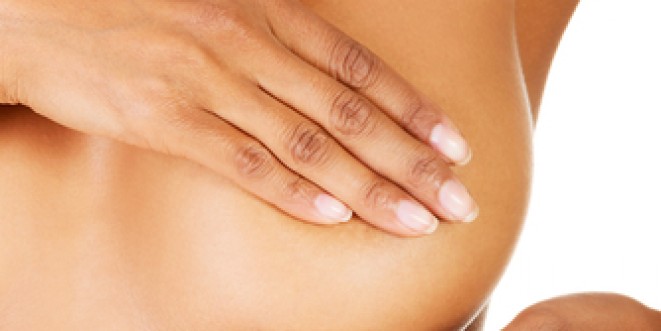I have Pimple-like Things On My Nipple
By Radiant HealthPublished: April 14, 2014

Q: For a few days now, I’ve been having these pimple-like things on my nipple. It hurts a bit. Please, any idea what this could be? I get scared whenever I think of it.
There are few things that can trigger the kind of instant, intense fear, even panic, a woman experiences when she finds something different about her breast, something that wasn’t there in the past. Most breast disease is found by the woman with the condition of concern. The good news is that, by far, most of the conditions of concern are not cancer.
Breast tissue is complex. The nipple, and the areola (pigmented area around the nipple) are unlike any other breast tissue, and so complicated that disease of the nipple is often considered separately from the rest of the breast. There is a very broad range of what normal breast tissue is like, including the nipple. Color, shape, size, texture, position on the chest and other characteristics are highly variable. That’s why it’s so important for a woman to do breast self-exams; she needs to know what’s normal for her. Then, if something different appears, she can detect it right away.
Any and all concerns a woman has about her breasts should be evaluated by a physician. He or she usually has had considerable experience with the spectrum of normal, as well as experience with the appearances and types of various diseases, most of which are not cancer. Because finding something different can be so frightening for a woman, a doctor’s evaluation, reassurance and education about the condition are vital for the woman’s peace of mind.
First, see your family doctor or general practitioner. A good rule for any type of doctor’s appointment is to, at the time you make the appointment, ask if there are any restrictions or instructions before the appointment. For breast appointments, you may be asked not to use deodorant, lotions, fragrances, or other products on the day of the appointment. Write down any symptoms you have, even if they seem unrelated to your breast concerns. Write down key personal information, such as current stresses or life changes. Make a list of all medications you’re taking (both prescribed and over-the-counter), as well as vitamins and supplements. Consider taking a family member or friend, to help you remember the information provided at the appointment. It can be difficult to remember, especially when you may be anxious or frightened.
Write down questions you have for your doctor. Ask, “If you had a friend or family member with this condition, what would you recommend?” Ask if you need to see a specialist. Request brochures or printed material you can take with you, and what websites, if any, are recommended. Be cautious about reading too many websites. There is an abundance of responsible information about breast health on the Internet, but as much or more irresponsible information. It isn’t possible for most readers to determine whether the information found is safe or not safe. Too much Internet research can be more frightening and anxiety-provoking than helpful.
Your doctor will ask you a number of questions about your symptoms, such as when they started, and if they stop and start or are present all the time. You’ll be asked if your symptoms are getting worse, what makes them worse, if anything makes the symptoms better, and more. Your doctor will then examine your breasts. Imaging studies may be recommended, such as a mammogram, an ultrasound of the breasts, or others. Often, the doctor will wait for results of imaging studies to determine if a biopsy is needed, and/or if a specialist in breast health should be consulted. In some cases, those decisions will be made at the first appointment.

Benign (noncancerous) diseases and conditions of the nipple and areola include: developmental variations, such as an inversion, retraction or enlargement of the nipple. Polyps (papillomas) in the milk ducts may look like warts around the nipple. Infections can form in the ducts. Dry scaling may be eczema. Sometimes flecks of calcium will be seen on mammogram. Cutaneous horns, which are hard, horny projections, may form on age spots. Rarely, cutaneous horns may become a squamous cell cancer on just the surface of the breast tissue. If left untreated, it may become a deeper cancer.
There is a rare form of breast cancer, Paget’s disease, which affects the nipple and areola. Paget’s disease starts on the nipple, resembling eczema, and spreads to the areola. It occurs primarily in women over the age of 50. It often indicates an underlying cancer. It can easily be mistaken for skin irritation or another benign skin condition. Paget’s disease usually occurs in only one breast. The signs and symptoms include crusty oozing or hardened tissue, redness, a tingling or burning sensation, clear or bloody discharge from the nipple, an inverted nipple, and possibly, a lump in the breast.
It’s important for women to understand their risk for breast cancer. Some factors that make a woman more susceptible to breast cancer include:
Age. The chance of breast cancer increases as a woman gets older.
A personal history of breast cancer. If you have cancer in one breast, you have an increased risk of developing cancer in the other breast.
A personal history of breast abnormalities. If you’ve had carcinoma in situ or atypical hyperplasia, your risk of developing breast cancer is higher. Some benign breast conditions also are associated with a slightly increased risk.
Family history. If you have a mother, sister, or daughter with breast or ovarian cancer or both, or a father or brother with breast cancer, you have a greater chance of developing breast cancer.
Radiation exposure. If you received radiation treatments to your chest as a child or young adult, you’re more likely to develop breast cancer later in life.
Excess weight. Weighing more than is healthy for your age and height increases your risk of breast cancer, especially after menopause and if you gained weight as an adult.
Hormone replacement. Taking estrogen after menopause increases the risk of breast cancer for some women.
This content is not intended to be a substitute for professional medical advice, diagnosis, or treatment. Always seek the advice of your physician or other qualified health providers with any questions you may have regarding a medical condition. Never disregard professional medical advice or delay in seeking it because of something you have read on this Website.
Like what you're reading? Sign up for our free newsletter and never miss a post! Plus get a FREE digital version of our Issue No.10 with sign up.

- Some Americans Will Have Medical Debt Wiped From Credit - July 9, 2022
- Natural Gas Used to Heat Homes Contains Some Harmful Chemicals - July 9, 2022
- Uterine Cancer Claims Many Black Lives - July 9, 2022
- Babies and Toddlers Get COVID-19 Shots - June 27, 2022
- FDA Bans Juul’s E-Cigarettes and Cartridges - June 27, 2022
- Polio Virus Found in London Sewage - June 27, 2022
- 200 Million Americans Are Drinking Contaminated Water - June 19, 2022
- Young Kids Can Finally Get Vaccinated Against COVID-19 - June 19, 2022
- New Regulations for Baby Sleep Products - June 19, 2022
- FDA Approves First Drug for Alopecia Hair Loss - June 19, 2022











